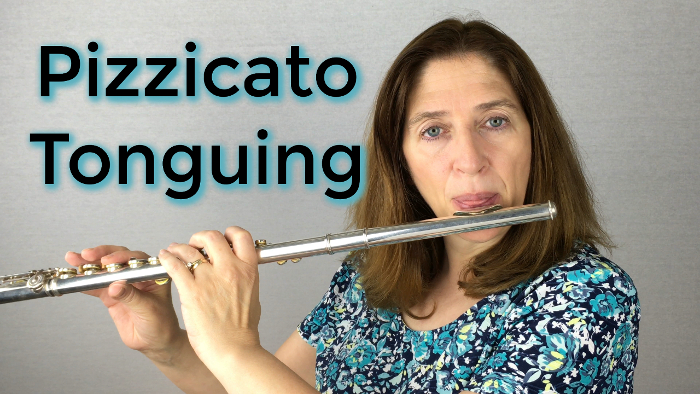Pizzicato Tonguing is really just tonguing without sound with your tongue making the sound in between your lips.
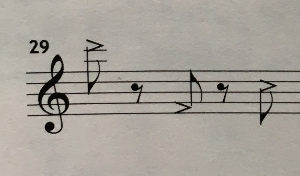 It’s indicated in music like what you see on the left. This is from a piece of music I just performed at the NFA convention a couple weeks ago called On a Poem, Harvard Square composed by Shawn E. Okpebholo. Now you do need to look at the key in pieces with extended techniques so that you are sure of what the composer wants. While there is some consensus on how to indicate these techniques sometimes a composer doesn’t comply.
It’s indicated in music like what you see on the left. This is from a piece of music I just performed at the NFA convention a couple weeks ago called On a Poem, Harvard Square composed by Shawn E. Okpebholo. Now you do need to look at the key in pieces with extended techniques so that you are sure of what the composer wants. While there is some consensus on how to indicate these techniques sometimes a composer doesn’t comply.
The simple explanation is that all you need to do is just tongue between the lips and blow a little air at the same time. When you play these types of tonguing you are not trying to get the pitch indicated by the symbol even though they are located on a certain line or space on the staff. But, when done correctly the air sounds have a pitch to them.
To begin these I build up a lot of pressure in my stomach, or more properly, I build up the support. If I don’t keep this pressure constant the tonguing will sound floppy without the nice punctuation.
However, if I hold in the air, breathe properly, create support then when I my tongue releases the air I can get a much broader sound.
 I can double-tongue in this pizzicato style as well since the music required it.
I can double-tongue in this pizzicato style as well since the music required it.
So, to do your pizzicato tonguing, tongue between your lips, use a lot of pressure, and get that sound to echo through the flute. Make sure that your air goes through the flute but not so much that your embouchure creates a pitch.
Experiment with this type of tonguing. Don’t be afraid of it if you see it in music. It’s not that scary. It’s really quite fun to work on.
Have fun!
Doctor Flute
Watch me demonstrate this: FluteTips 47 Pizzicato Tonguing
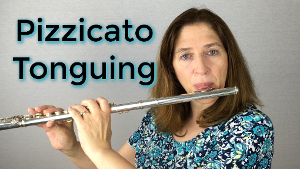
Practice with Me Low Register Tonguing
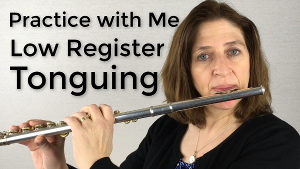
FluteTips 46 Practicing Triple Tonguing in Reverse
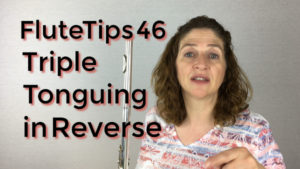
FluteTips 19 Low Register Tonguing

